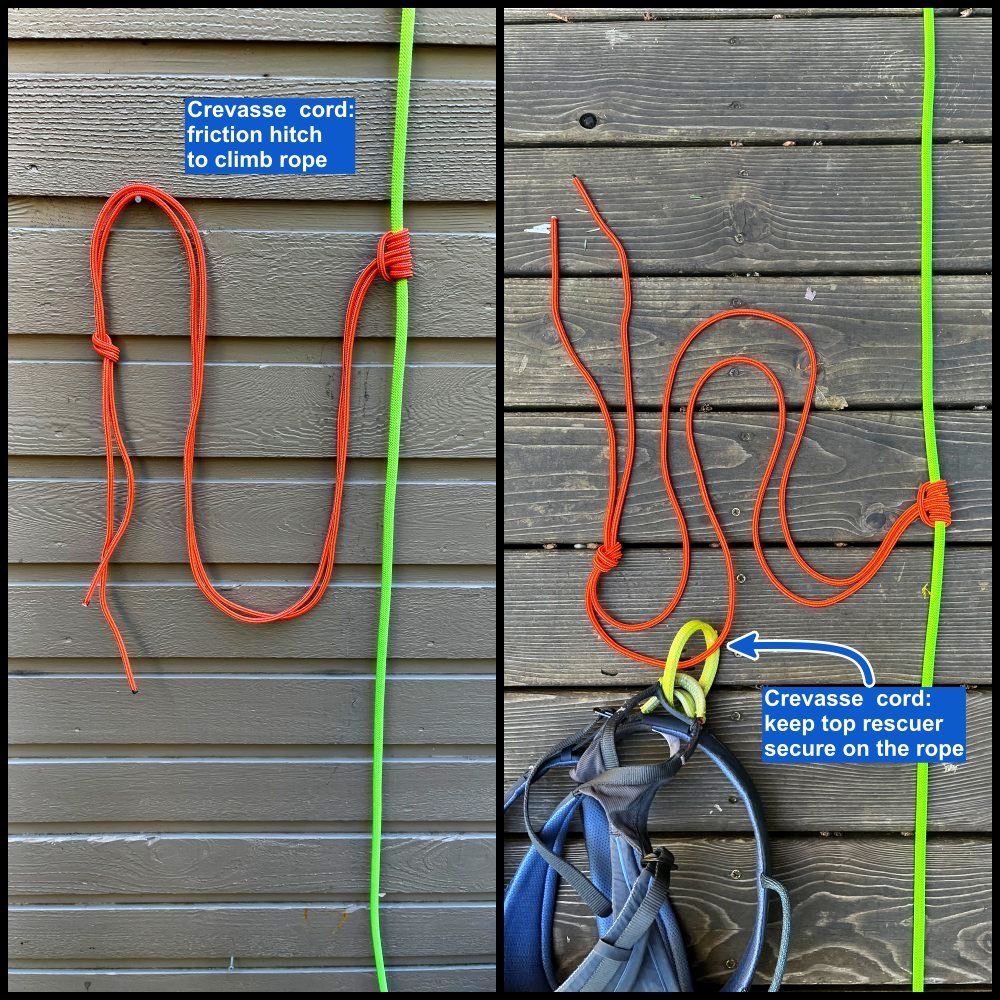The "crevasse cord"
Premium Members can read the entire article here:
For a long time, and without giving a lot of thought to it, I carried a pair of 120 cm slings or standard cordelette (about 5 meters of 7 mm cord) on glacier climbs.
Recently I’ve changed to a shorter, lighter, less bulky and more versatile tool. I call it “crevasse cord”.
It's 10ish feet / 3.5 m of V-TX cord, made by Sterling Rope. V-TX is impressive. It's just 5.4 mm and rated to 15 kN. It has a low stretch Dyneema core and a polyester sheath. It's fairly supple, which means it’s good for friction hitches. I carry it “open” or untied, not permanently tied in a loop with a welded double fisherman’s knot.
It's relatively inexpensive, about $1.20 per foot at my local climb shop.
Using a crevasse cord - friction hitch
As a friction hitch - Tie any friction hitch around the rope, usually a prusik or Klemheist. If you need a shorten the connection, tie an overhand knot.
Left photo: If you’re the unfortunate person in the hole, you can tie a friction hitch and use this as a foot loop to ascend the rope. (Please, stop carrying those old-school designated “foot prusiks”.)
Right photo: As a rescuer on top, you can use this as your primary connection to the anchored rope. Connect yourself to the hitch by passing the cord through your belay loop and tie an overhand knot. Cool, you’re now connected to the friction hitch and you saved a carabiner.
Using a crevasse cord - single point anchor building
If you build a T slot (aka deadman) anchor, you need at least about 4 feet or 1.5 m of sling or cord to connect the anchor to your master point. The crevasse cord is perfect. You can basket hitch the cord through a hole of a picket, or clove hitch it around a deadman such as an ice axe.





